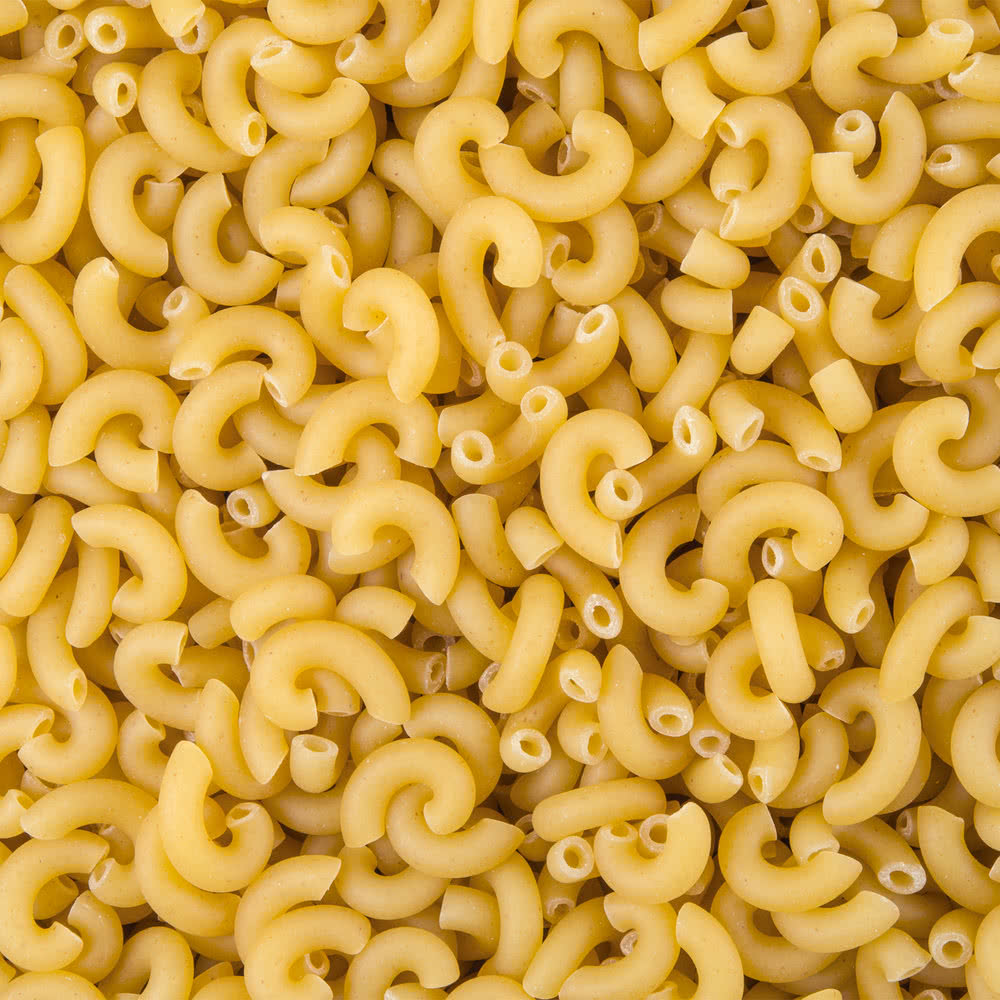

However, the product as well as the name derive from the ancient Greek "Macaria". refer to elbow-shaped pasta similar to macaroni in North American culture. The many varieties sometimes differ from each other because of the texture of each pasta: rigatoni and tortiglioni, for example, have ridges down their lengths, while chifferi, lumache, lumaconi, pipe, pipette, etc. Maccheroni comes from Italian maccheroni, plural form of maccherone. In Brazilian Portuguese, Estonian, Greek, Iranian, Russian, Ukrainian, and other Slavic languages, as well as Arabic, Turkish, Kazakh, Azerbaijani, Uzbek, Kyrgyz, and other Turkic languages and some Italian-American dialects the word was adapted as a generic term for all varieties of pasta. This general meaning is still retained outside Rome and in different languages which borrowed the word. In Italian, maccheroni refers to elongated pasta, not necessarily in tubular form.

In the United States, federal regulations define three different shapes of dried pasta, such as spaghetti, as a "macaroni product". In Italy and other countries, the noun maccheroni can refer to straight, tubular, square-ended pasta corta ("short-length pasta") or to long pasta dishes, as in maccheroni alla chitarra and frittata di maccheroni, which are prepared with long pasta like spaghetti. The word "macaroni" is often used synonymously with elbow-shaped macaroni, as it is the variety most often used in macaroni and cheese recipes. The curved shape is created by different speeds of extrusion on opposite sides of the pasta tube as it comes out of the machine. Some home machines can make macaroni shapes but, like most pasta, macaroni is usually made commercially by large-scale extrusion. Made with durum wheat, macaroni is commonly cut in short lengths curved macaroni may be referred to as elbow macaroni. Macaroni ( / ˌ m æ k ə ˈ r oʊ n i/, Italian: maccheroni) is dry pasta shaped like narrow tubes. Melt the rest of the butter in a pot over medium heat add flour and cook, stirring (photo below, left), for two to three minutes until smooth.Elbow macaroni die: front view (left), and rear view (right)

Spread bread crumbs on a baking sheet with rim, and bake until golden brown do not leave oven unattended, the bread crumbs brown fast and may burn easily set aside. Drain pasta into a colander and transfer to prepared baking dish. Bring a generous amount of water to boil in a large pot over high heat add a pinch of salt and the pasta, and cook over medium-high heat until al dente. Grease an 8×8 inch baking dish with two tablespoons of butter set aside. ½ tsp white pepper, preferably freshly ground Cheesy Elbow Pasta- Coditos en salsa de quesoġ ½ cups shredded melting cheese, such as Chihuahua, friulano, mozzarella, etc. When gathering with friends in the “Before COVID19” era, cheesy elbow pasta was also a staple at pot lucks and buffet tables, cooked in large batches to move with the times, I am sharing my mom’s recipe adapted to smaller quantities, enough for four portions.
Elbow pasta mac#
Nowadays, this dish, AKA macaroni cheese, Mac ‘n’ Cheese, or “Coditos en salsa de queso” continues to be comfort food that may be a weekday meal on its own, or a side dish as part of a special dinner, as presented in my previous post. In Mexico, thin noodles from the Middle East (fideos) were brought by the Spaniards sometime during colonial times (1521-1821) baked pastas became known during the Second French Intervention under the short rule of Austrian Archduke Maximilian (1864-1867), and more broadly under the long presidency of Porfirio Díaz (1884-1911), who favoured European architecture and cuisines, particularly if Italian or French. In Canada, when it was still a British colony in the mid 1800s, the dish arrived through new immigrants from other parts of the Empire, and allegedly Canada is the top consumer of Kraft Dinner™ (boxed macaroni and cheese) this love for the humble dish has been even epitomized in a song (see FUN FACTS at the end). Thomas Jefferson famously popularized macaroni in the US at the turn of the 19 th Century. This recipe hardly needs an introduction pasta and cheese have been baked together in Italy and the rest of Europe for centuries.


 0 kommentar(er)
0 kommentar(er)
